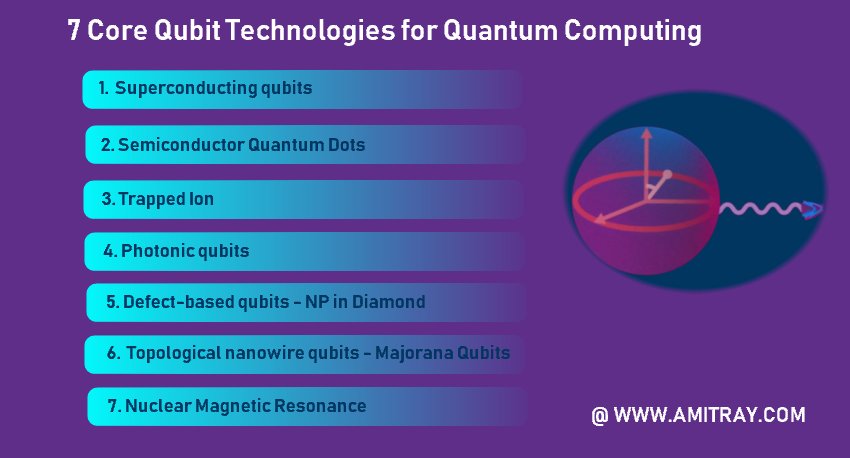7 Core Qubit Technologies for Quantum Computing
Here we discussed the advantages and limitations of seven key qubit technologies for designing efficient quantum computing systems. The seven qubit types are: Superconducting qubits , Quantum dots qubits , Trapped Ion Qubits , Photonic qubits , Defect-based qubits , Topological Qubits , and Nuclear Magnetic Resonance (NMR) . They are the seven pathways for designing effective quantum computing systems. Each one of them have their own limitations and advantages. We have also discussed the hierarchies of qubit types. Earlier, we have discussed the seven key requirements for designing efficient quantum computers. However, long coherence time and high scalability of the qubits are the two core requirements for implementing effective quantum computing systems.

Quantum computing is the key technology for future artificial intelligence. In our Compassionate AI Lab, we are using AI based quantum computing algorithms for human emotion analysis, simulating human homeostasis with quantum reinforcement learning and other quantum compassionate AI projects. This review tutorial is for the researchers, volunteers and students of the Compassionate AI Lab for understanding the deeper aspects of quantum computing qubit technologies for implementing compassionate artificial intelligence projects. We followed a scalable layered hybrid computing architecture of CPU, GPU, TPU and QPU, with virtual quantum plugin interfaces.
Earlier we have discussed Spin-orbit Coupling Qubits for Quantum Computing and AI, Quantum Computing Algorithms for Artificial Intelligence, Quantum Computing and Artificial Intelligence , Quantum Computing with Many World Interpretation Scopes and Challenges and Quantum Computer with Superconductivity at Room Temperature. Here, we will focus on the primary qubit technologies for developing efficient quantum computers.
Building a quantum computer differs greatly from building a classical computer. The core of quantum computing is qubits. Unlike classical bits, qubits can occupy both the 0 and 1 states simultaneously and can also be entangled with, and thus closely influenced by, one another. Qubits are made using single photons, trapped ions, and atoms in high finesse cavities.
Superconducting materials, semiconductor quantum dots are promising hosts for qubits to build scalable quantum processor. However, other qubit technologies have their own advantages and limitations. The details of the seven primary qubit systems are as below:

